When it comes to iconic blue gemstones, Sapphire is simply unbeatable. Its distinguished world-class colour and breathtaking clarity have been leaving people speechless for millennia, and the gem has undoubtedly made its mark on history down the ages.
Along with Emerald, Ruby and Diamond, it is one of only four gemstones classified as truly 'precious' and is an absolute must-have in any jewellery and gemstone collection. Here, we explore more about the history and science behind this true blue beauty in much more detail.
THE HISTORY OF SAPPHIRE
Sapphires have been mined and prized since at least 800 BC. They take millions - sometimes even billions - of years to form. The exact details of the initial discovery of Sapphire are lost to time, but we can be reasonably sure that the earliest stones would have been discovered in stream beds and the banks around them, having been washed from their original source by rains and erosion, and deposited downstream by nature.
We can only guess what must have been going through the mind of the first person to hold one of these precious stones up to the sunlight and witness its vivid blue hue. But, there’s no denying the gem has left its mark in the history books.
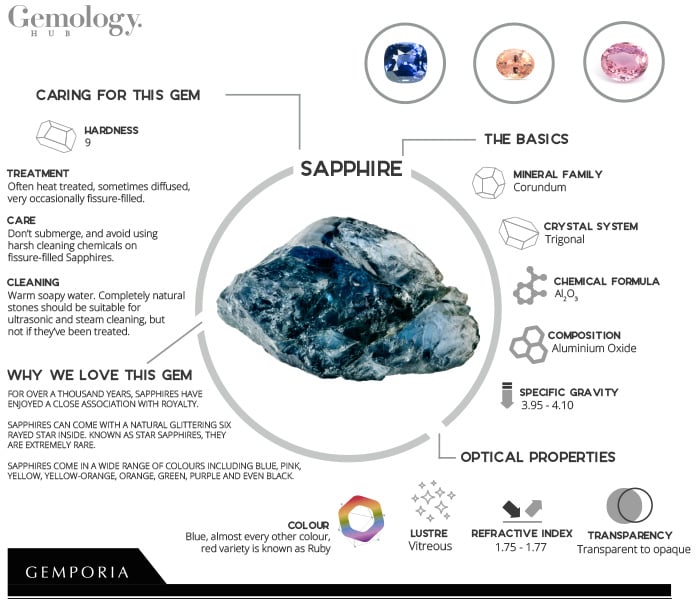
Sapphires are known and revered the world over for their beauty and mystery. In many ancient cultures, this gem has been admired not only for its elegance, but also for the magic and good luck often associated with it. In Western civilisations, Sapphire has long been the traditional stone of choice to set alongside Diamonds for a man wanting to express his love and commitment to someone special.
Sapphire, by tradition, has long been associated with nobility, truth, sincerity and faithfulness, and has been the stone of choice for royalty for generations. In ancient Greece and Rome, kings and queens were convinced that blue Sapphires protected them from envy and harm, and Persians believed that blue Sapphires were actually chips from a huge pedestal that supported the Earth, the reflections of which coloured the sky. In the Middle Ages, it was thought to be an antidote against poisons, and to possess a magical power to influence the spirits.
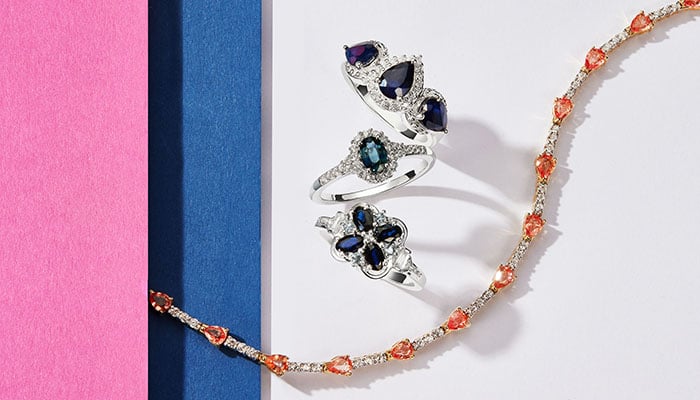
The name Sapphire comes from the ancient Greek ‘Sappheiros’ meaning ‘precious blue gem’, and is possibly even rooted in the Sanskrit ‘Sanipriya’ meaning ‘dark coloured stone sacred to Saturn’. Interestingly, earlier cultures probably used this word to refer to the opaque blue gem Lapis Lazuli, but over time it came to be used for this blue variety of Corundum.
The Sapphire's world-class blue hue is the benchmark against which all other blue gems are judged, including Topaz, Aquamarine and Tanzanite. The dazzling blue colours that radiate from the gem have long been associated with the skies and heavens.
For over a thousand years, Sapphires have enjoyed a close association with royalty. The unquestionably exquisite and perfectly turned out Mrs Simpson received many gems from Edward VIII; her collection included incredible Emeralds, vivid Rubies and large, flawless Diamonds. However, she always maintained that her favourite gemstone was Sapphire - so much so that, due to being so proud of one bracelet designed by Van Cleef and Arpels, she allegedly asked her tailor to shorten the sleeves of all her dresses and blouses so that everyone could see her Sapphires.
The iconic royal Ceylon Sapphire engagement ring belonging to Catherine, Duchess of Cambridge is one of the most famous gemstones in the world, showcasing the vibrant blue hues to be desired in a Sapphire. The British Crown jewels also feature many phenomenal quality Sapphires from all four corners of the Earth.
Sapphire is also mentioned at least 12 times in the Bible, such as “Under his feet was something like a pavement made of Sapphire, clear as the sky itself” from Exodus 24:10. Again, though, this may have been referring to the stone Lapis Lazuli, which was prized by many ancient civilisations.
Additionally, it was once thought that the stone tablets on which the Ten Commandments were inscribed were made from Sapphire. Shah Jahan (1592 - 1666), the Indian Emperor who commissioned the Taj Mahal and many other architectural masterpieces of the Mughal Empire, also commissioned the Peacock Throne, an elaborate design that featured many notable precious stones including Sapphires. The peacocks which adorned the throne had tails encrusted with the vivid blue gem - unfortunately, though, the throne didn't survive the end of the Empire in 1739 and is now lost to history.
One of the largest gem-quality Sapphires ever discovered came to be known as the Star of India, and is a 563 carat Star Sapphire originally mined in Sri Lanka. The renowned gemologist George Frederick Kunz (for whom Kunzite is named) procured it for the 1900 Paris Exposition on behalf of the financier John Pierpont Morgan (for whom Morganite is named).
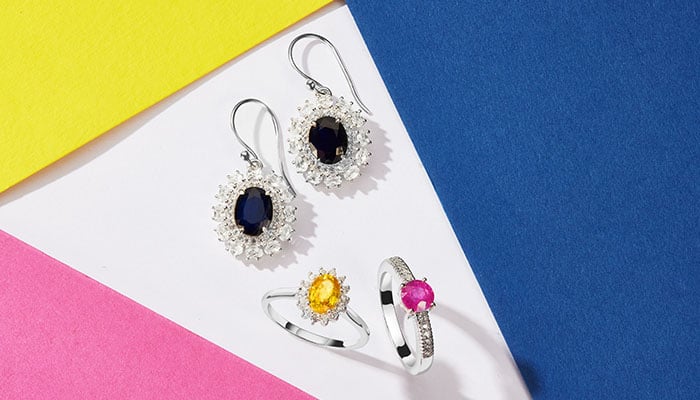
Other than its country of origin, the history of the gem before this point is unknown, though it is thought to have been mined at least 300 years before it came into Morgan’s ownership. After the Paris Exposition, Morgan donated this and many other gems to the American Museum of Natural History, where it has remained ever since - apart from a brief period between October 1964 when it was stolen by jewel thieves, and January 1965 when the (uninsured) stone was recovered.
It is also notable for having a Star on both sides of the gem.
SAPPHIRE GEMSTONE INFORMATION
Sapphire is the birthstone for September and the anniversary gemstone for the for the 5th, 45th and 70th anniversaries. It is also linked with the star sign Taurus. It features a trigonal crystal system, which it shares with Ruby, varieties of Quartz, Tourmaline and others.
Sapphire is the blue variety of the mineral Corundum, to which Ruby also belongs. In its purest state, Corundum is colourless, but imperfections in the stone give it a range of incredible hues. Any stones beyond the blues of Sapphire and the reds of Ruby earn themselves the title Fancy Sapphire (sometimes Parti Sapphire), and almost every colour under the sun can occur. There are bright pinks, oranges, yellows, greens, purples and even colour change and clear varieties.
Sapphire And Ruby Formation

These Fancy Sapphire varieties offer a durable, alternative choice for anyone who loves the romance and legacy associated with this gemstone, but who also want something out of the ordinary. Diamond sits at the top of the Mohs scale of mineral hardness with a 10, but all varieties of Corundum come right below that, at 9 on the scale. This is important as anybody who intends to wear their jewellery on a daily basis needs to bear in mind the wear and tear the stone will have to endure, and Fancy Sapphires bring a whole rainbow of colours into this bracket of suitability.
This wonderful colour variety also gives our skilled cutters and designers considerable flexibility when creating designs, and one of our most popular Sapphire collections - Rainbow Sapphire - features multiple colours of the stone arranged together in single designs.
Overall, the Sapphire's affiliation with royalty and its incredible hardness make it a genuine contender alongside Diamond as an enduring engagement ring. The 20th century saw a concerted marketing effort to push Diamond as the only gemstone suitable for an engagement ring - and of course Diamond is a beautiful, fiery and an incredibly durable stone.
Before this campaign, however, Sapphire was the more popular choice, and has in recent times seen somewhat of a resurgence as an engagement ring choice. This is mostly thanks to the high profile Ceylon Sapphire engagement ring Lady Diana Spencer selected on the occasion of her engagement to the then Prince Charles in 1981, and by the same ring again hitting the spotlight when Prince William proposed to Kate Middleton in late 2010.

Corundum in its purest form is composed only of aluminium and oxygen (hence its chemical formula AL2O3), and it requires a growth environment free of silicon to form. In its purest, colourless form, Corundum is actually extremely rare and was once popular as a Diamond alternative. However, it is trace elements that enter the Corundum by chance during its formation that trigger the mineral cocktail that produces all the exquisite and unique varieties of Sapphire.
For example, Blue Sapphire is coloured by the presence of titanium and iron, and it is the balance of these impurities within the stone that causes such a wide range of blue tones, from bright, clear cornflower blues to deep dark midnight blues. Pink Sapphires are coloured by chromium, and if there’s enough chromium in the mix the colour deepens to red, and the stone becomes a Ruby. Iron alone can lead to yellow and green colours, while orange hues need iron and chromium. Vanadium causes purple hues, and is also present in colour change varieties.
Ten Fascinating Legends And Myths About Sapphire
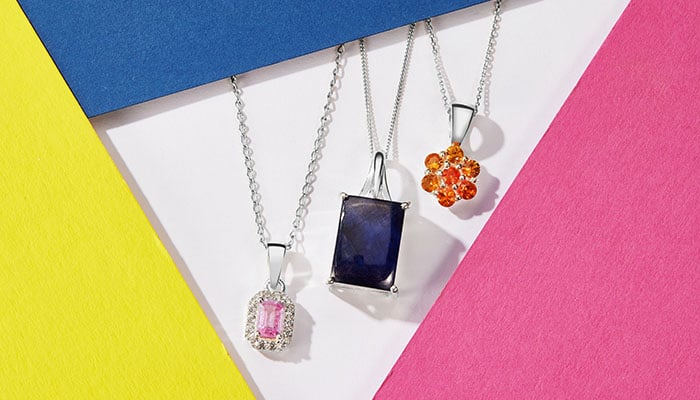
After Diamond, Sapphire is one of the world’s most precious gemstones. This recognition of prestige and class is afforded to only four gems - the other two being Ruby and Emerald. All other gemstones are classified as semi-precious, though there is a push by parts of the jewellery industry to get Tanzanite re-classified as a precious stone too.
Valuing Sapphires generally comes down to colour, which is made up of hue, tone and saturation. Vivid saturation is often found in the most prized Sapphires, along with a hue as close to pure blue as possible. As with all gemstones though, the most important thing is that the gem displays the colour you’re passionate about and want to own as part of your collection.
SAPPHIRE CRYSTAL HEALING
Gemstones are as old as time, and in the years since their first discovery they've picked up a lot more than just adoring collectors and fascinated mineralogists. Many have gained stories regarding their legend, lore and healing properties, and whilst there's no evidence to suggest that any of these properties are real, it's still interesting to explore the esoteric side of Mother Nature's miracles.
It's worth asking ourselves, "If you truly believe in something, does that mean it's true"? Scientifically, the answer is no, but what about on a more personal, spiritual level? If you really truly believe that an item in your house is having an effect on you, are you more likely to feel that effect? It's really not for us to say, but it's a very interesting concept that deserves further research.
Once again though, we must point out though that no studies have ever found any therapeutic effects or properties in gemstones, and the following is for your information only.
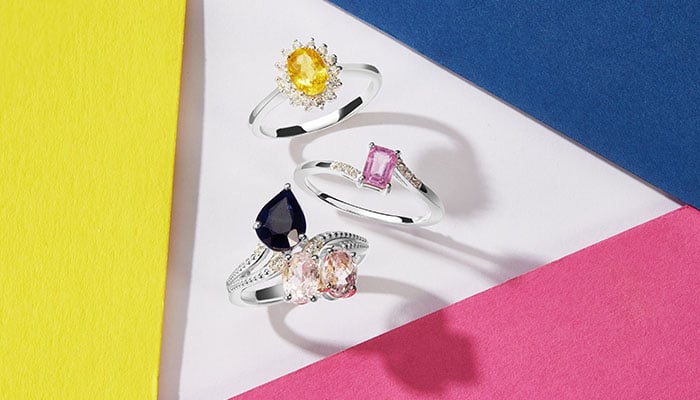
Sapphire is steeped in folklore and legend stretching right the way back through its fascinating history. As a talisman, it was once thought to protect from poison and fever and it was linked with heightened concentration. It has been called a stone of wisdom, faith and hope, and has also been said to represent strength, power and kindness. In many faiths throughout history, there are similar stories about Sapphire aiding spiritual enlightenment. Sapphire is available in a rainbow of hues, and each colour represents different qualities to crystal healers. Orange, for example, is linked with letting out one's creativity, while yellow is more linked with prosperity and ambition.
GEMOLOGICAL PROPERTIES OF SAPPHIRE
- Colour Blue (almost every other colour as Fancy Sapphire - red variety is Ruby)
- Family Corundum
- Mohs Scale Hardness 9
- Specific Gravity 3.95 - 4.10
- Refractive Index 1.75 - 1.77
- Lustre Vitreous
- Crystal System Trigonal
- Transparency Transparent to opaque
- Chemical Formula Al2O3
- Composition Aluminium Oxide
WHERE IS SAPPHIRE MINED?
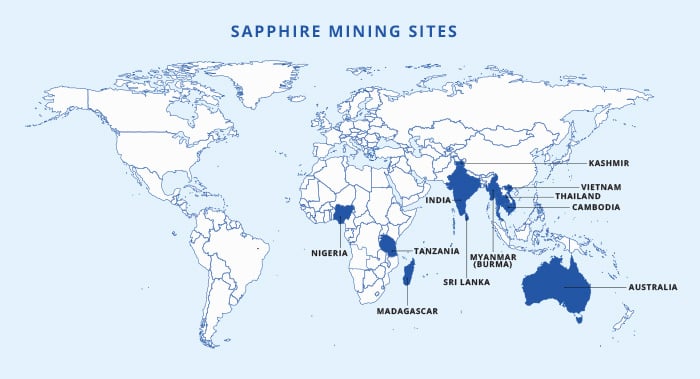
The connoisseur's choice of stone originates in Kashmir, an area to the north of India where it meets Pakistan and China. Known simply as Kashmir Sapphire, these rare jewels combine their soft velvety appearance with a rich vibrant blue hue that has been compared to that of the cornflower. In the same part of the world, India, Vietnam, Thailand, Cambodia, Myanmar and Sri Lanka also harbour very fine quality Sapphires beneath their soils. High quality Sapphires from Sri Lanka still use the prefix Ceylon, which was the name of this gem rich island prior to 1972. Ceylon Sapphires command incredibly high prices per carat, particularly when they have not been heat treated.
Further afield, we also take pleasure in bringing you Madagascan Sapphire and Australian Sapphire. We also source beautifully clear Nigerian Sapphire which boasts delicate green undertones, and a beautiful array of Sapphire stones from the Songea region of Tanzania, including green, yellow, orange and rainbow varieties. This gemstone can, in very rare circumstances, display a beautiful star of light known as asterism. Only the very best lapidarists have the skills to spot the potential for this in rough Sapphire material, and then cut the stones correctly to bring out the shining star of light.
VARIETIES OF SAPPHIRE
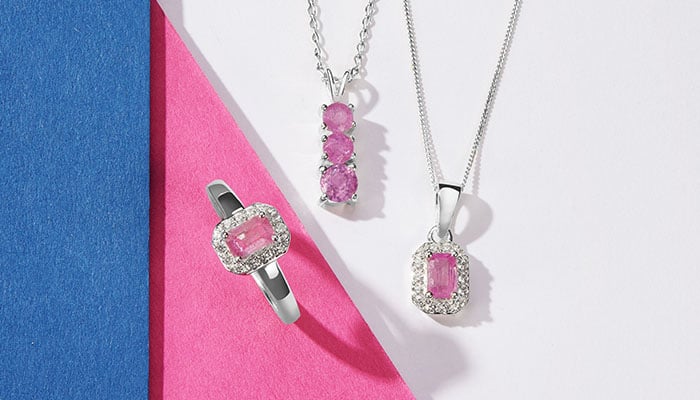
Each individual Sapphire source gifts its gemstones with unique characteristics, and in Madagascar these include a beautiful evenness of colour, a deep twilight blue hue and some impressive carat weights too. These three qualities have occurred together, and given us one of the most stunning Sapphires that our tireless gem hunters have ever sourced. The larger carat weights and dark body colour gives the stone a lot of lustre and, with gem weights sometimes exceeding ten carats, Madagascan Blue Sapphire can offer an affordable price point with the look of jewellery fit for the royal collection.
Mining can, however, be sporadic - meaning a continuing supply of the gemstone is anything but guaranteed.
If you were going to own any non-blue Sapphire, this would be the one we'd recommend first. Padparadscha is named for the colour of a lotus flower and derives its name from the Sanskrit 'padma ranga' which translates literally as 'lotus colour'. In reality, the flower is a little more pink than the gemstone, and the gem needs to display both orange and pink to be classified as a true Padparadscha Sapphire. It will ideally also show flecks or undertones of yellow and red.
Whenever Padparadscha Sapphire comes into stock here at Gemporia it always sells out fast, so if the below link takes you to an empty page, please accept our apologies. However, bookmark the page and keep checking back, as we're generally able to source a small parcel of gemstones once or twice a year.
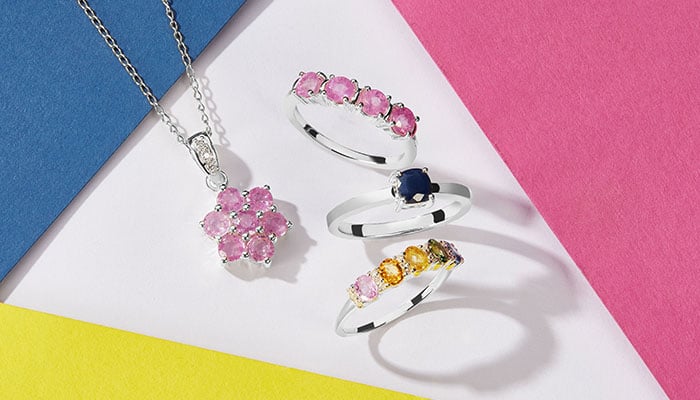
The Australian Blue Sapphire deposit is unusual, as only about 5% of the total gemstone yield is made up of blue hued stones, and of this only 1% are the top grade stones that we insist on for your jewellery. The rest of the yield is made up of other gorgeous hues.
The very best quality stones from this deposit can stand proud among some of the world's finest Sapphire gemstones, as they display a deep but open midnight blue hue and phenomenal clarity. The blue is caused by a high iron content within the gem, which often results in very dark stones with a closed colour. But, in daylight, these Australian Blue Sapphires will glow with the brilliant blues of very fine Sapphire, making for an incredibly high quality and remarkably collectible gemstone.
Mother Nature has given this variety of Sapphire such a perfect shade of purple that it is rapidly becoming the most sought after Fancy Sapphire after Padparadscha. It's not difficult to see why, as the mix of red and blue that makes up the principle body colour is balanced beautifully.
The violet undertones (with violet itself being a mixture of blue and purple) give the gem a wonderful colour play when it is moved around, and whilst this isn't a colour change stone, top quality pieces appear more violet in bright daylight, and more purple under incandescent lighting. The gem hails from a brand new Sapphire deposit somewhere in southern Madagascar, the large island off the east coast of Africa that is famed for the quality and variety of gemstones that are hidden beneath its soils.
OTHER COLOURS OF SAPPHIRE
There are so many different, wonderful colours of Sapphire, and plenty of beautiful hues to add to your collection. Some examples include: Here are some other beautiful hues that you might want to add to your collection:
- Sakahara Pink Sapphire
- Tunduru Colour Change Sapphire
- Umba Sapphire
- Ceylon White Sapphire
- Hot Pink Sapphire
- Rainbow Sapphire
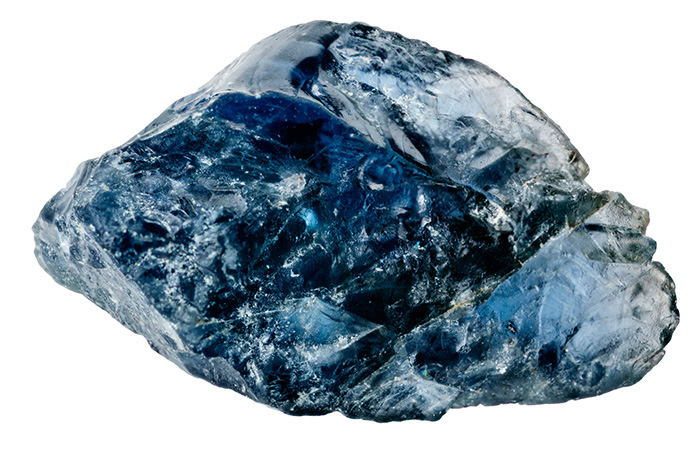
HOW TO CLEAN SAPPHIRE
If your Sapphire has lost some of its natural lustre and brilliance, it's probably just in need of a gentle clean. We'd recommend using some warm soapy water (use only a very mild detergent like washing up liquid) and a soft lint-free microfibre cloth. Dampen a part of the cloth in the soapy water and gently brush away at the gemstone until the accumulated dirt is washed away, and your gem should look as good as new. Don't forget to clean the underside of the gemstone too, as dirt on the back of a stone can stop the light properly bouncing in and out of the stone, giving it a duller than usual appearance.
Sapphire is a tough gem, so if this method isn't quite removing the dirt, you could also use a soft brush to gently work the grime loose. High quality, natural stones with no inclusions or fractures can be steam cleaned and are safe for use in an ultrasonic cleaner. As always though, if you're not sure, don't risk it.
Jewellery Cleaning Methods
HOW TO CARE FOR SAPPHIRE
As with all jewellery, keep each piece in a separate box or pouch if you can, or in a box that stops items rubbing against or scratching others. Scientifically, only Ruby and Diamond would be tough enough to scratch Sapphire, but it's always best to keep pieces separate. As always, remove jewellery before exercising, doing housework or when using any harsh chemicals like bleach. When not in use, ensure your Sapphires are kept away from heat sources and out of direct sunlight too - though don't worry about wearing your jewellery on sunny days, this is just a storage precaution.
Jewellery Boxes
If you haven't yet added Sapphire to your jewellery collection, Gemporia is on hand to help with a tremendous variety of colours, shapes and jewellery designs featuring this precious stone. The links below will take you to our vast Sapphire vault, where you can then refine your search by variety, colour, metal type and more.
Your perfect Sapphire piece is just a few clicks away - we hope you enjoy wearing it and adding to its remarkable story.
All Rings Earrings Necklaces Bracelets Pendants

